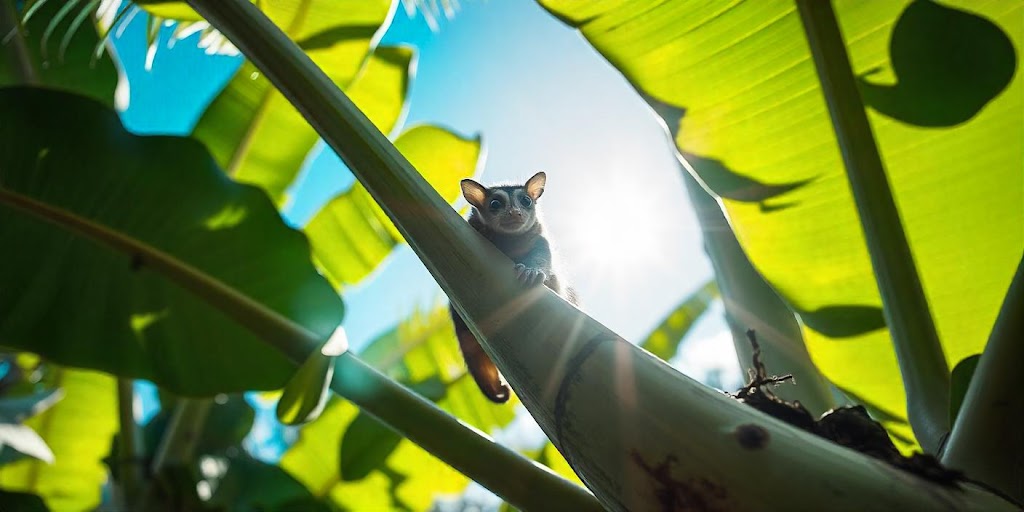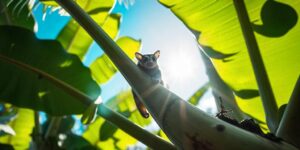Can Sugar Gliders Eat Bananas? A Complete Guide to Nutrition, Safety, and Feeding Practices
Sugar gliders are adorable, energetic little marsupials that require a balanced and nutritious diet to stay healthy and happy. As a responsible sugar glider owner, you might wonder which fruits are safe for them to eat and which ones should be avoided. One of the most common questions owners ask is: Can sugar gliders eat bananas? The short answer is yes, but there are some important factors to consider before making bananas a regular part of their diet.
In this guide, we’ll explore the nutritional benefits of bananas, potential risks, and the best way to feed them to sugar gliders. We’ll also cover some other safe fruit options to ensure your sugar glider gets a well-rounded diet.
Understanding the Sugar Glider Diet
Sugar gliders are omnivores, meaning they eat a combination of fruits, vegetables, insects, and tree sap in the wild. Their natural diet includes:
✔ Fruits (such as nectar and berries) for essential vitamins and hydration.
✔ Insects (like crickets and mealworms) for protein.
✔ Tree sap and pollen as a natural carbohydrate source.
When keeping sugar gliders as pets, it’s crucial to replicate their natural diet as closely as possible by providing a combination of:
- Fresh fruits and vegetables for vitamins and minerals.
- Protein sources like mealworms, crickets, and boiled eggs to support muscle growth.
- Calcium-rich foods to maintain bone health and prevent deficiencies.
While fruits are a delicious and healthy treat, they should only be fed in moderation, especially those that are high in sugar, like bananas. Overfeeding fruit can lead to obesity, diabetes, and dental issues in sugar gliders.
Can Sugar Gliders Eat Bananas?
Yes, But in Moderation!
Bananas are safe for sugar gliders to eat, but they should be given in small portions due to their high natural sugar content. While bananas contain beneficial nutrients, feeding too much can cause health problems over time.
Let’s take a closer look at the nutritional benefits bananas offer and the risks associated with feeding them to sugar gliders.
Nutritional Benefits of Bananas for Sugar Gliders
Bananas are a great source of vitamins and minerals that can be beneficial for sugar gliders when included as part of a well-balanced diet.
1. High in Potassium – Supports Muscle and Nerve Function
Potassium plays a vital role in muscle contractions, nerve function, and fluid balance. It helps prevent muscle cramps and supports overall mobility.
2. Vitamin C – Boosts the Immune System
Vitamin C helps strengthen the immune system, reducing the risk of infections and aiding in tissue repair. However, sugar gliders can naturally produce their own vitamin C, so they don’t need too much from their diet.
3. Vitamin B6 – Supports Brain and Blood Health
Vitamin B6 is essential for brain function, metabolism, and red blood cell production. A small amount in their diet can help keep their energy levels stable.
4. Carbohydrates – Provides Energy
Sugar gliders are high-energy animals that need carbohydrates for fuel. The natural sugars in bananas can provide a quick energy boost, but too much can lead to obesity and metabolic issues.
Potential Risks of Feeding Bananas to Sugar Gliders
While bananas have some great health benefits, there are also a few risks you need to be aware of before offering them as a snack.
1. High Sugar Content – Can Cause Obesity
Bananas contain a lot of natural sugar, which can be problematic for sugar gliders if they consume too much. Their bodies process sugar slowly, and excess sugar can lead to weight gain, diabetes, and dental issues.
2. High Phosphorus Levels – Can Lead to Calcium Deficiency
Bananas have a higher phosphorus-to-calcium ratio, which can interfere with calcium absorption. This can lead to weak bones and metabolic bone disease if their overall diet is not balanced with calcium-rich foods.
3. Digestive Issues – Can Cause Diarrhea
Too much banana at once can cause digestive upset, leading to loose stools or diarrhea. Introduce it slowly and monitor your sugar glider’s reaction to avoid stomach discomfort.
How to Safely Feed Bananas to Sugar Gliders
If you decide to give your sugar glider bananas, follow these safety guidelines to make sure they enjoy it without any negative effects.
1. Offer Small Portions
✔ Give only one or two small slices (about the size of a dime) per week.
✔ Too much can upset their stomach or lead to weight gain.
2. Remove the Peel
✔ While banana peels aren’t toxic, they are difficult to digest and can be contaminated with pesticides. Always remove the peel before feeding.
3. Mix with Other Fruits
✔ To provide nutritional variety, mix bananas with other low-sugar fruits like apples, berries, or papaya.
4. Monitor for Reactions
✔ Watch for diarrhea, lethargy, or loss of appetite after feeding bananas. If you notice any negative symptoms, stop feeding bananas and consult a vet.
Other Safe Fruits for Sugar Gliders
If you want to rotate fruit treats and keep your sugar glider’s diet balanced, here are some other safe fruit options:
✔ Apples (seedless) – A good source of fiber and vitamin C.
✔ Blueberries – High in antioxidants and low in sugar.
✔ Papaya – Rich in vitamin A and digestive enzymes.
✔ Grapes (small portions only) – Hydrating and nutrient-rich.
✔ Mango – Provides vitamins A and C but should be given in moderation.
✔ Watermelon – A great low-calorie, hydrating treat.
Fruits to Avoid
Not all fruits are safe for sugar gliders! Avoid feeding:
🚫 Citrus fruits (oranges, lemons, limes) – Too acidic and can cause stomach upset.
🚫 Avocado – High in fat and can be toxic.
🚫 Cherries (unless pitted) – The pits contain cyanide.
🚫 Rhubarb – Contains oxalates that can be harmful.
Final Thoughts: Should You Feed Bananas to Sugar Gliders?
✔ Yes, bananas can be a safe and nutritious treat for sugar gliders when fed in moderation. They contain important vitamins and minerals, but their high sugar and phosphorus content mean they should be given sparingly.
✔ To keep your sugar glider healthy and happy, always provide a balanced diet with a mix of fruits, proteins, and vegetables. Avoid overfeeding bananas and watch for any signs of digestive upset.
✔ Variety is key! Mix bananas with other low-sugar fruits and ensure your glider’s diet is rich in calcium to maintain strong bones and overall health.
Got a sugar glider? What’s their favorite fruit? Share your experiences—I’d love to hear all about your little glider’s eating habits!

